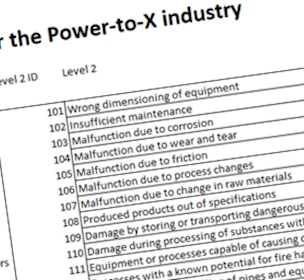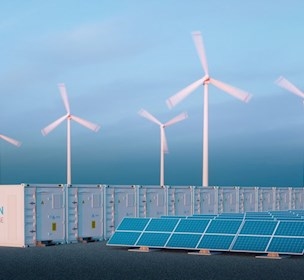New guideline to accelerate electrofuels in a safe manner
The electrofuels industry has been gifted an online guideline that lays the foundation for the fast and safe implementation of the green technology. The guideline provides an overview of relevant standards and necessary approvals, along with a roadmap for the required safety measures.
The path to success for electrofuels and Power-to-X is paved with hesitant authorities, local resistance and a lack of safety culture. Today, DBI – the Danish Institute of Fire and Security Technology – and FORCE Technology release a new online guideline titled "Safe and Faster Power-to-X," which aims to remove some of these obstacles.
As the title suggests, the guideline serves as a reference tool for the electrofuels industry, authorities, and society to ensure the transition to green technology can happen both faster and more safely.
Accelerating implementation
– Companies can refer to the guideline as early as the idea phase to see which standards they need to follow, what approvals are required, and the safety measures a given project demands. This will help accelerate the process of designing, building, and operating Power-to-X facilities, says Jesper Sjørvad, Principal Consultant, Landbased Power-to-X at DBI.
– Power-to-X is in its early stages, where we still lack comprehensive standards, procedures and legislation. This makes authorities hesitant – is there enough documentation for approval? Investors are hesitant – how solid is the business case? And citizens are hesitant – is it safe to have a hydrogen plant in the backyard? In the midst of this hesitation, companies are trying to move forward but are unable to fully exploit its potential due to a lack of foundational structures. The guideline is one of the first steps in building that foundation,” says Rian Holdstock, Project Manager at FORCE Technology.
To facilitate the process of making Power-to-X as safe as possible, the guideline includes instructions on how to assess the risks of the technology, examples of HSE (Health, Safety, and Environment) plans, and an introduction to safety management practices.
Building a safety culture in record time
– Following standards doesn’t automatically mean something is safe. More than half of all accidents in the hydrogen industry are due to human error, and that can't be controlled by standards. We try to fill the gaps between standards and approvals by also focusing on safety because a safety culture can't simply be transferred from other industries – it must be built from the ground up,” says Jesper Sjørvad.
Since the Power-to-X industry is still in its infancy, it doesn't have a long tradition of safety culture to rely on. The oil and gas industry took 30 years to build a safe work culture, and after 15–20 years, the offshore wind industry has made significant progress but still has room to improve. The hope is that the guideline will help establish a foundation so that a safety culture across Power-to-X stakeholders can be acceptable in just 5–10 years.
"Safe and Faster Power-to-X" stands out from other technical documents by also addressing social aspects. Many Power-to-X projects are halted or delayed due to opposition from neighbors and local communities. Therefore, the guideline also includes ten useful tips on securing local support, engagement, and ownership. The guideline is launched on an intuitive online platform with multiple access points and is aimed broadly at the Power-to-X community, so that green fuel producers, service and supply companies, municipal approval authorities, and relevant state agencies can benefit from the collective knowledge. Users can also comment on individual sections, making the guideline a living document where the industry can provide feedback and suggest changes.
For further information
Jesper Sjørvad, Principal Consultant, Landbased Power-to-X, DBI: jsj@dbigroup.dk, +45 50809633
Rian Holdstock, Project Manager, FORCE Technology: rih@forcetechnology.dk, +45 43250612
About Safe and Faster Power-to-X
Safe and Faster Power-to-X has been carried out by the two GTS institutes, DBI – the Danish Institute of Fire and Security Technology – and FORCE Technology. The guideline was developed as part of Energy Cluster Denmark's research and innovation partnership, MissionGreenFuels, which aims to phase out fossil fuels across the entire energy sector, including shipping, aviation, and the maritime shipping industry. The project is supported by the Innovation Fund Denmark through the Innomissions II program.
Copenhagen Infrastructure Partners, DBI, DFDS, Dansk Standard, European Energy, Everfuel, FORCE Technology, Green Hydrogen Systems, Port of Rønne, Siemens Gamesa Renewable Energy, and Skovgaard Invest have all contributed to the development of the guideline.

The foundations of succes in Power-to-X
/Page
Along with Power-to-X, we must focus on products and plants to succeed in the green transition.

Risk management in industry
/Service
It is vital to ensure the safety of people and equipment and to protect the project owners' capital.

Power-to-X – materials, testing and storage
/Industry
Power-to-X is a crucial part of the green transition of our energy supply.

